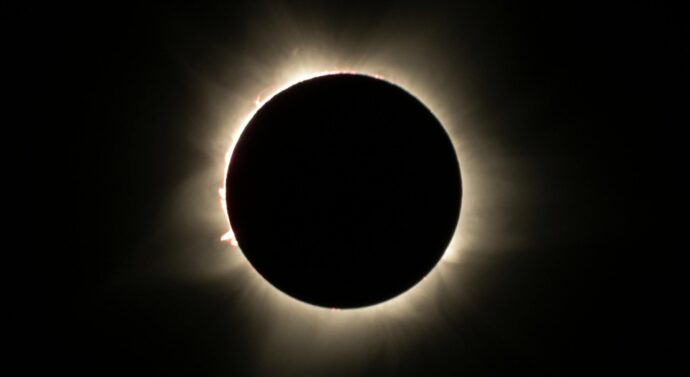
The solar eclipse phenomenon 2024
News April 7, 2024, Comments Off 121On Monday, April 8, 2024, a total solar eclipse will pass through the southeast corner of Missouri. This is a mere seven years after the last total solar eclipse that traveled through central Missouri in August 2017.
Throughout human history, solar eclipses have captivated people and have frequently been linked to a wide range of myths, stories, and cultural beliefs. They have contributed significantly to the advancement of science, especially in verifying aspects of Einstein’s theory of general relativity.
A total solar eclipse occurs when the moon entirely obscures the sun’s disk; it causes the sky to become noticeably darker and makes the sun’s corona visible. A partial solar eclipse happens when the moon covers only a portion of the sun. It happens when there is imperfect alignment of the Earth, moon, and sun. An annular solar eclipse takes place when the moon is too far away from Earth to entirely cover the sun’s disk. As a result, the moon’s silhouette is surrounded by a ring of sunshine.
Although they happen periodically, solar eclipses are relatively rare occurrences for any specific area on Earth. Jamie Carter from Live Science found that on average, a total solar eclipse is visible from a specific location on Earth about once every 375 years while annular solar eclipses happen somewhere on Earth around every three to five years. Kate Howells, from The Planetary Society, found that annular eclipses occur more frequently in regions nearer the poles than in regions nearer the equator, such as the Arctic and Antarctic.
In the past 30 years, Missouri has seen three eclipses; two of which were or will be total solar eclipses. On May 10, 1994, an annular solar eclipse traversed from the southwest to the northeast across the middle of Missouri. The total solar eclipse of August 21, 2017, moved from the northwest to the southeast, crossing the middle of Missouri. Between the 2017 eclipse and the 2024 eclipse, there are a few locations that will see both. One of these locations is Missouri. The other two are Illinois and Kentucky.
The upcoming total solar eclipse on April 8, 2024, is projected to travel from the southwest to the northeast, reaching the southeastern corner of Missouri. Considering the frequency of total solar eclipses in other regions, the occurrence of total solar eclipses in Missouri in 2017 and 2024 is significant and may be considered unusual. August 23, 2044, will mark the next viewable total solar eclipse to pass over the United States after April for more than 20 years according to NASA.
Though most of Missouri will have nearly 99% totality, NASA will also be livestreaming the total eclipse so if you are not able to travel to an area of totality you can enjoy this normally, once in a lifetime phenomenon.
Direct solar eclipse observation without appropriate eye protection might result in blindness or permanent eye damage. To watch the event safely, it’s essential to utilize special solar viewing glasses or other indirect viewing methods, including pinhole projectors.
Image from Pexels.com